Most people don’t know that skydiving is a competitive sport, that it’s been around for a very long time and there are many disciplines in the sport. There are records of the very first skydiving competition of landing parachutes accurately in the 1930’s in Russia, and from then until 1970 a few competitive events sprouted. But it wasn’t until group freefall skydiving, known as “formation skydiving” or “FS” emerged that brought the first competition to the United States which was held in 1970 in New York. And that, as they say, is history.
New categories and different disciplines started emerging as skilled skydivers started progressing the sport. Today, many amazing athletes have been perfecting disciplines, making watching an exciting event – as non jumpers and jumpers alike.
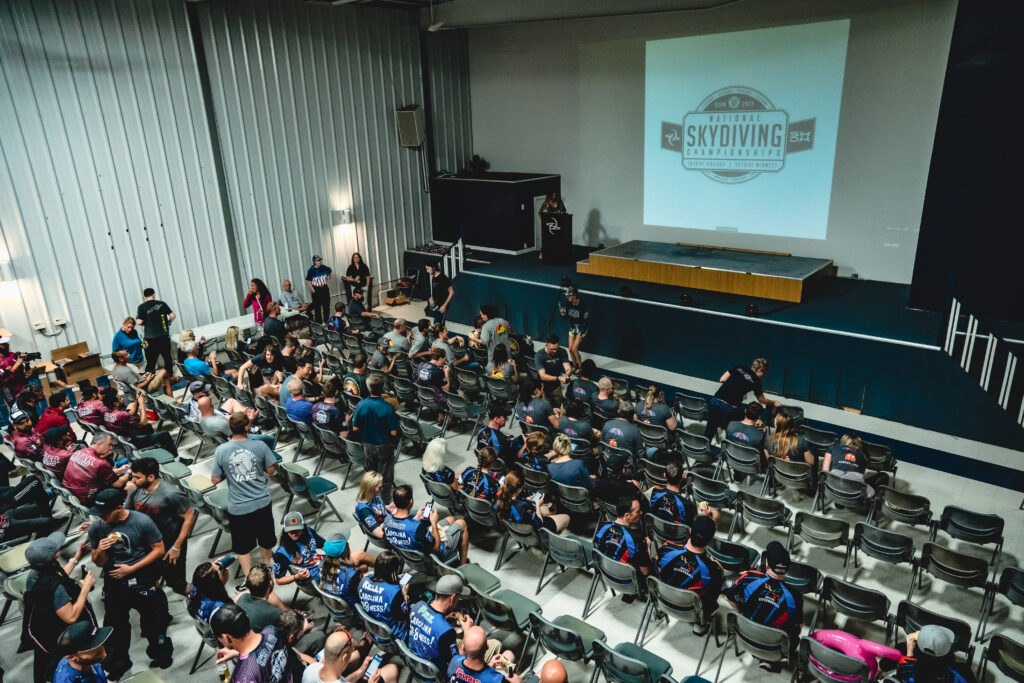
Skydive Chicago is often host to the USPA Nationals and they’ve been held here in 2002, 2007, 2010, 2013, 2017 and 2022. In 2016, Skydive Chicago hosted the largest world competition known as the Mondial (all disciplines) in 2016. Now, we’re looking forward to hosting the 2024 USPA Nationals that brings in over 1000 competitors, judges, vendors and spectators over the course of three weeks.
Here we explain the different skydiving disciplines also seen in competition:
1. 4, 8, 10 & 16-Way Formation Skydiving: This discipline involves a team of either 4, 8, 10 or 16 skydivers (plus a videographer) who work together to create specific formations during freefall. Each team must perform a series of predefined jumps and complete formations in the correct sequence. Speed, precision, and coordination are key, as judges score based on how well the team achieves the required formations within a set time.**
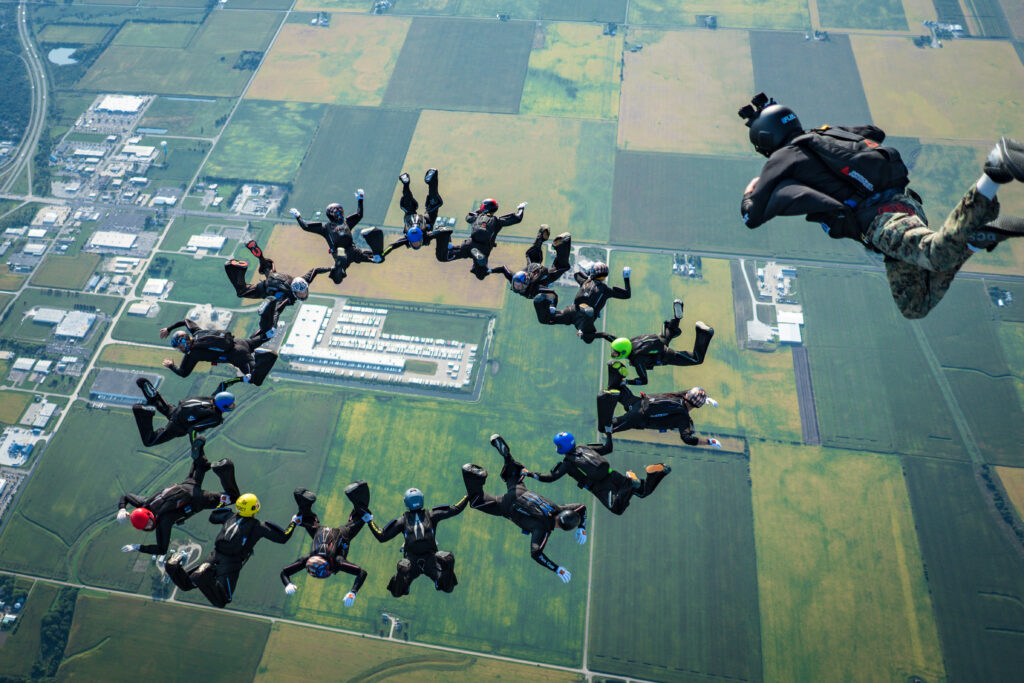
2. Freefly: Freefly skydivers are made up of a team of 2 performers and a videographer. Teams fly in vertical orientations from head up, head down to moving across the sky to perform dynamic maneuvers in freefall. Competitions often include creating a routine to dazzle the judges as well as performing specific sequences of tricks called, Compulsory Dives. Teams are judged on their ability to execute the maneuvers accurately and fluidly, showcasing both skill and creativity.
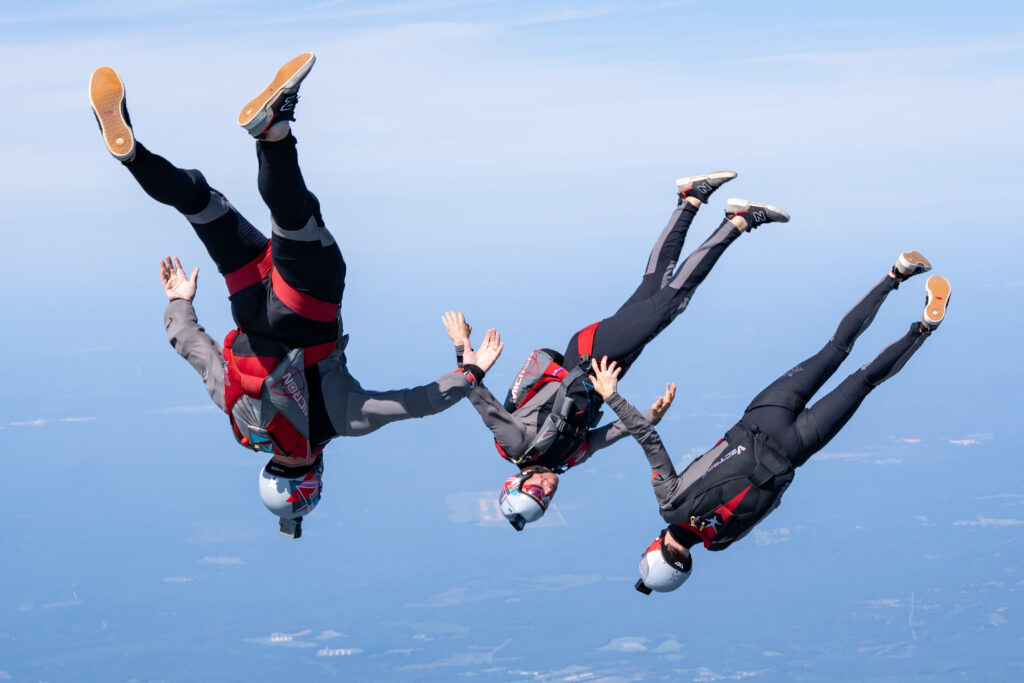
3. Freestyle: This is a solo performer and videographer where skydivers perform individual routines incorporating spins, flips, and other aerial tricks – very much like freeflying. The focus is on the creativity, difficulty, and execution of the moves. Judges evaluate the skydiver’s ability to control and display their moves with style and precision.
4. Accuracy: In accuracy skydiving, single competitors aim to land their parachutes as close as possible to a small target on the ground. The challenge is to control the parachute and land precisely on the target, with the distance from the center determining the score. This discipline tests a skydiver’s precision and control during landing.
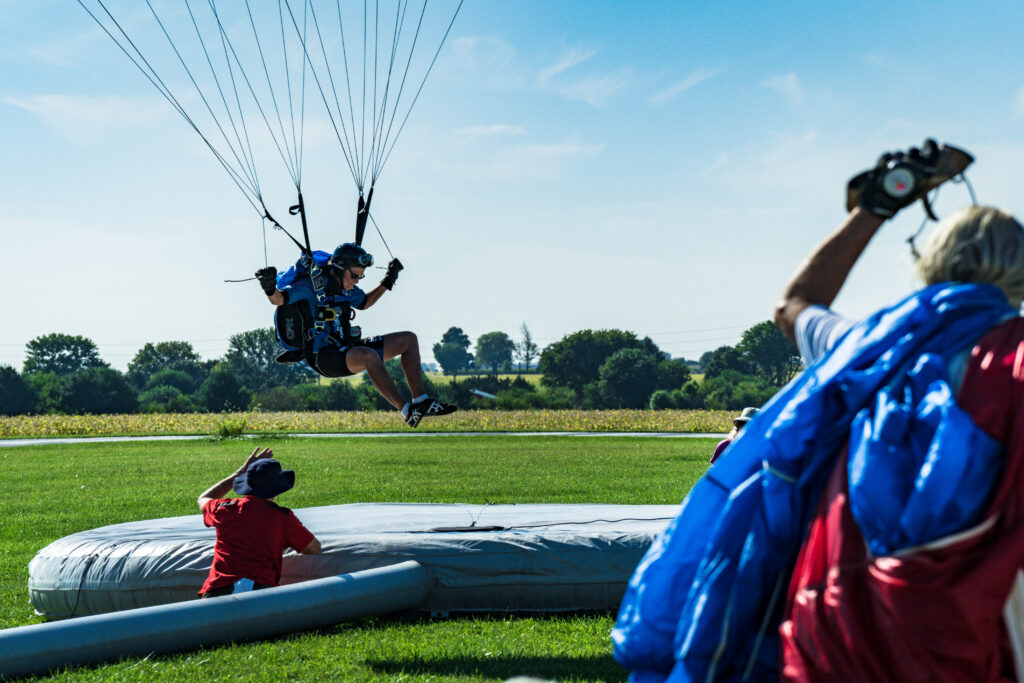
5. Wingsuit Performance: This solo discipline involves skydivers flying in specialized wingsuits designed to maximize horizontal speed and distance. Competitors are judged on their ability to fly smoothly, maintain control, and achieve distance goals. The aim is to showcase the skydiver’s skill in navigating the wingsuit and managing flight dynamics.*
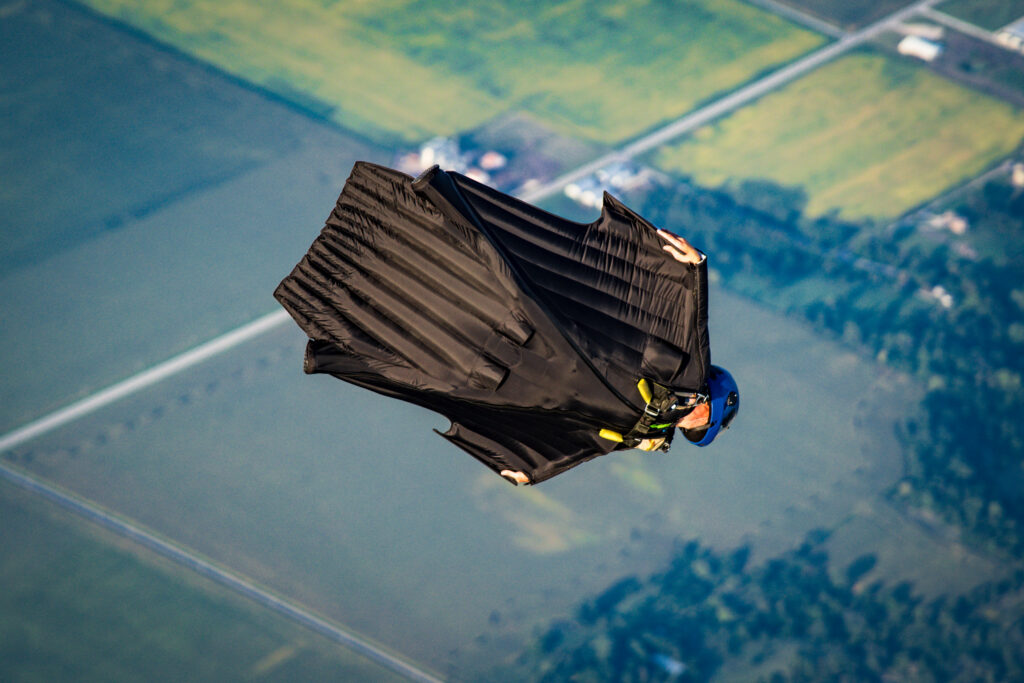
6. Wingsuit Acro: Wingsuit acro is all about performing complex and visually impressive aerial maneuvers while wearing a wingsuit. Skydivers are judged on the execution of their tricks, including spins, flips, and other advanced moves. Creativity and technical skill are key factors in scoring.
7. Speed: In speed skydiving, solo competitors aim to achieve the highest average vertical speed during freefall. They use specialized equipment to measure their speed and altitude. The goal is to maintain the highest possible speed while ensuring safety and stability throughout the jump.*
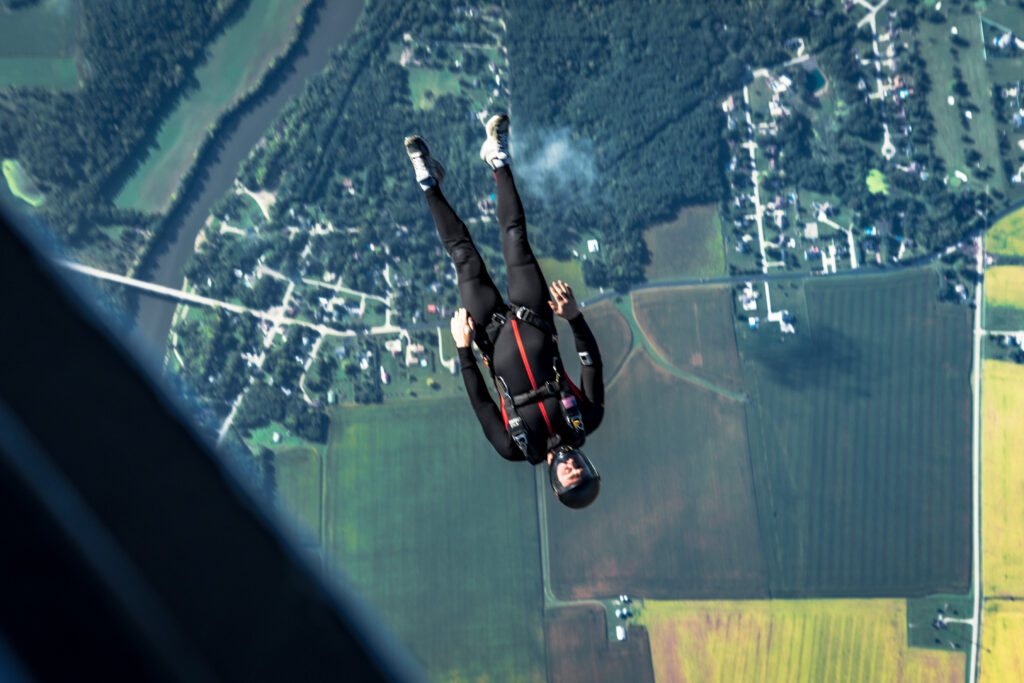
*Judging for Wingsuit Performance and Speed are used with the Fly Sight which records freefall data such and speed and distance in which judge use to score competitors.
8. VFS (Vertical Formation Skydiving): VFS involves a team of 4 skydivers plus a videographer working in a vertical orientation to build and transition between formations. Teams must complete specific formations, demonstrating precise control and coordination flying in a head up or head down orientation.**
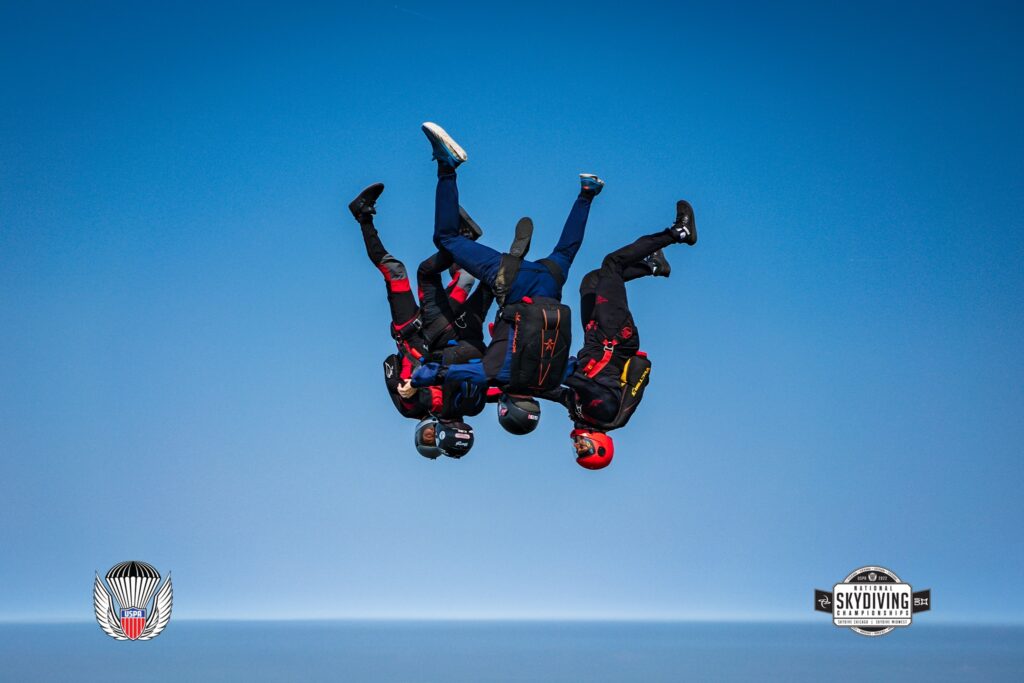
9. MFS (Multi-Formation Skydiving): Similar to VFS but in a more complex format, MFS involves 2 skydivers and a videographer creating and transitioning between multiple formations in a single jump. Teams must navigate through various formations flying head up, head down and belly to earth.**
10. CRW (Canopy Relative Work): Groups of canopy pilots create formations with their parachutes, instead of their bodies, jumping from different altitudes and number of competitors with a videographer.**
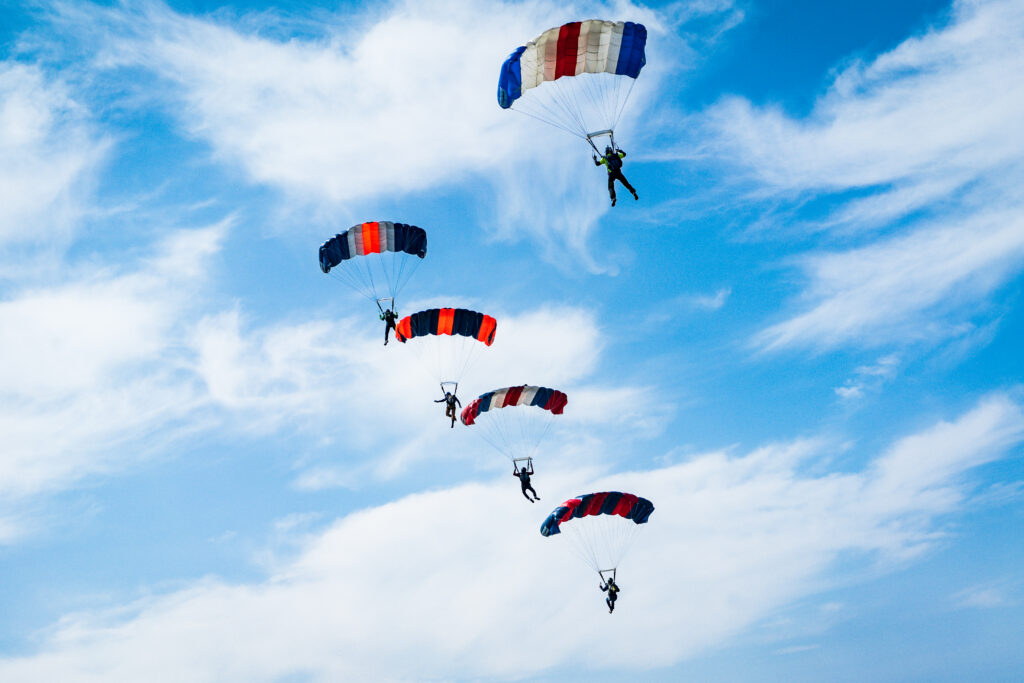
**For any ‘FS’ event, judging focuses on how many formations are completed. For example, if 10 formations are completed, the team earns 10 points.
Each discipline requires a unique set of skills and techniques, and the USPA Nationals at Skydive Chicago will showcase the best in each category, highlighting the diverse talents and competitive spirit of skydivers from across the nation.





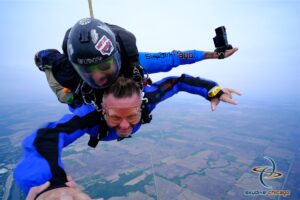
![An Advanced Freefall Program [AFP] solo skydiving student exits the plane at Skydive Chicago](https://skydivechicago.com/wp-content/uploads/2025/02/home-afp1-300x225.jpg)